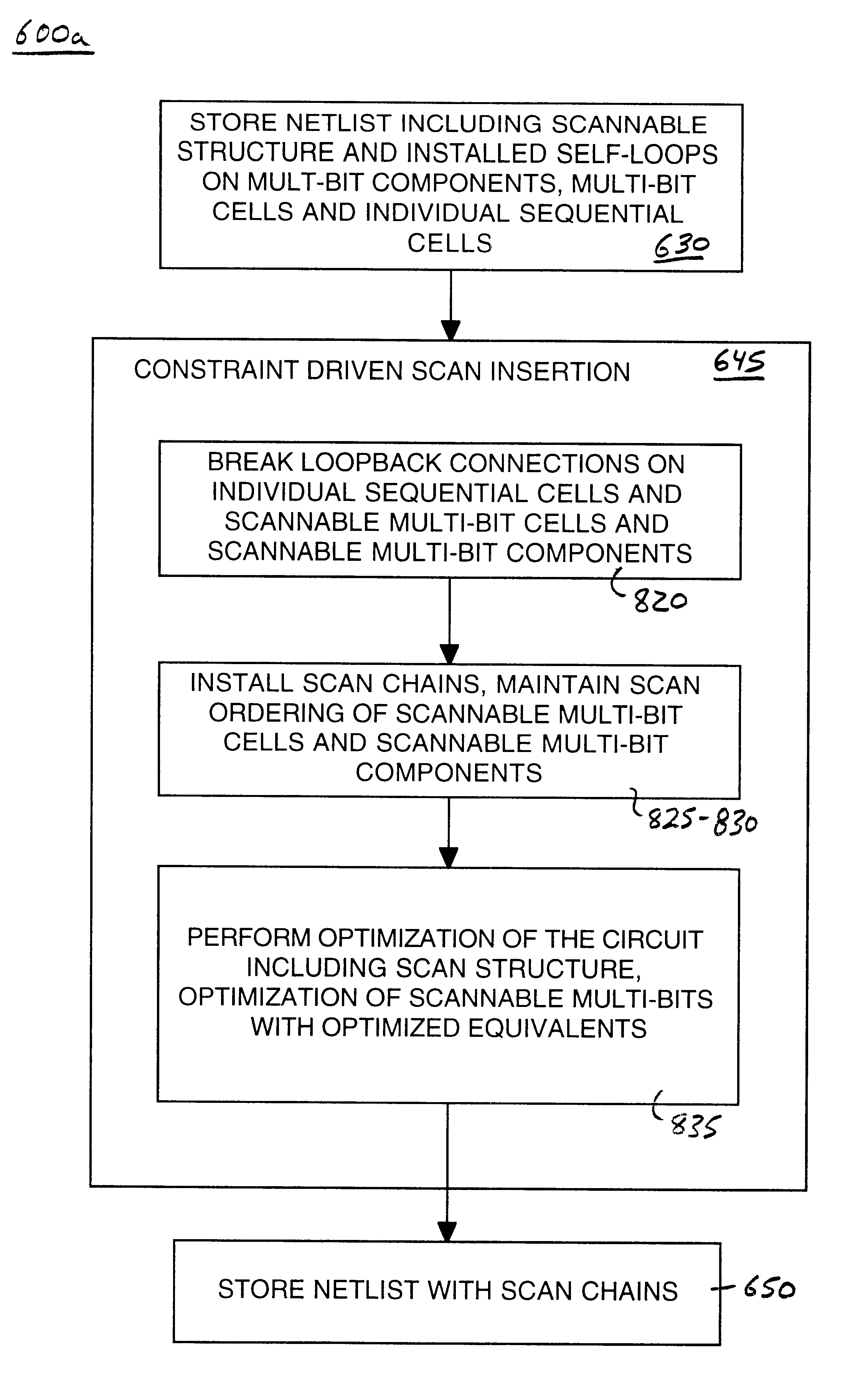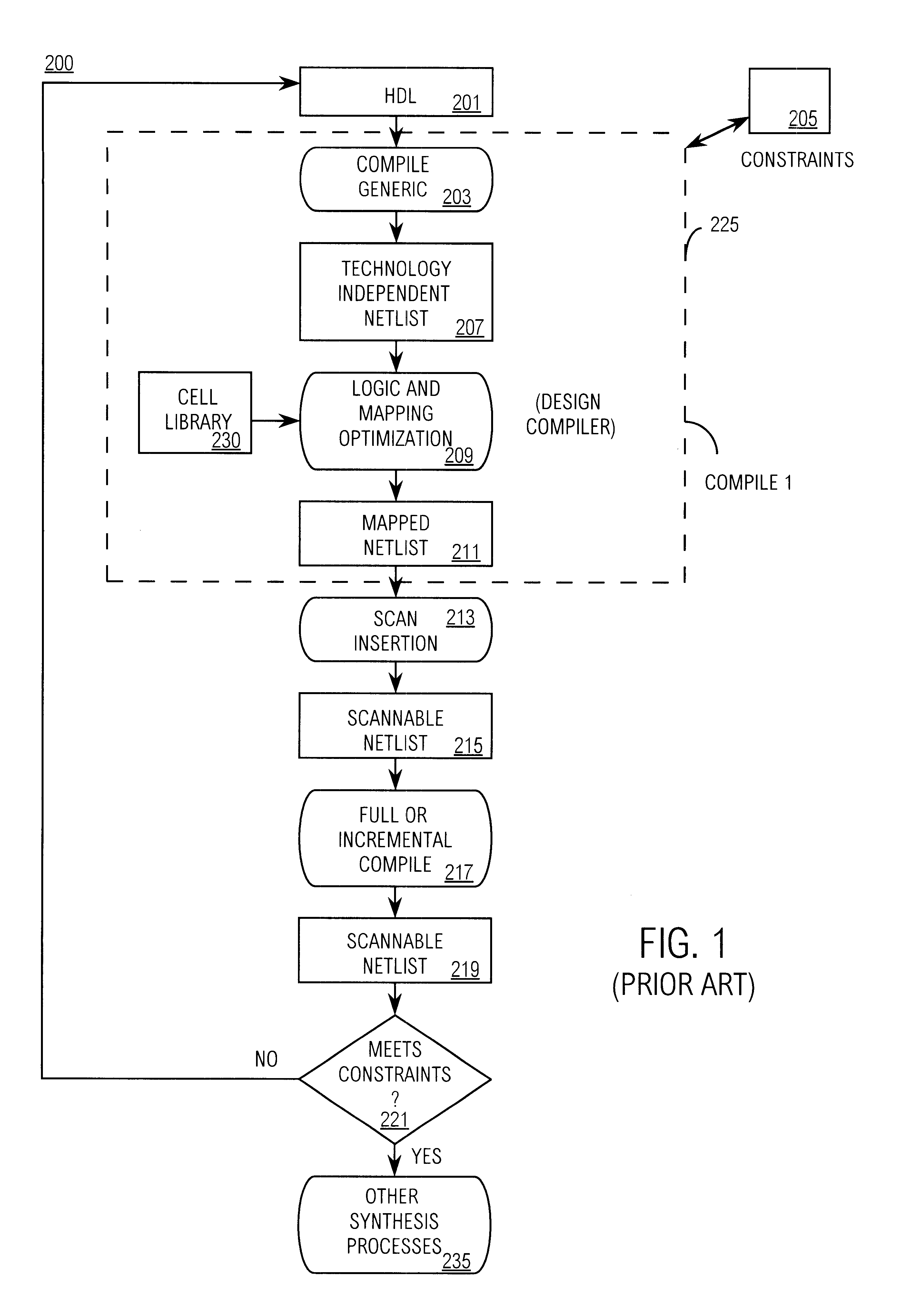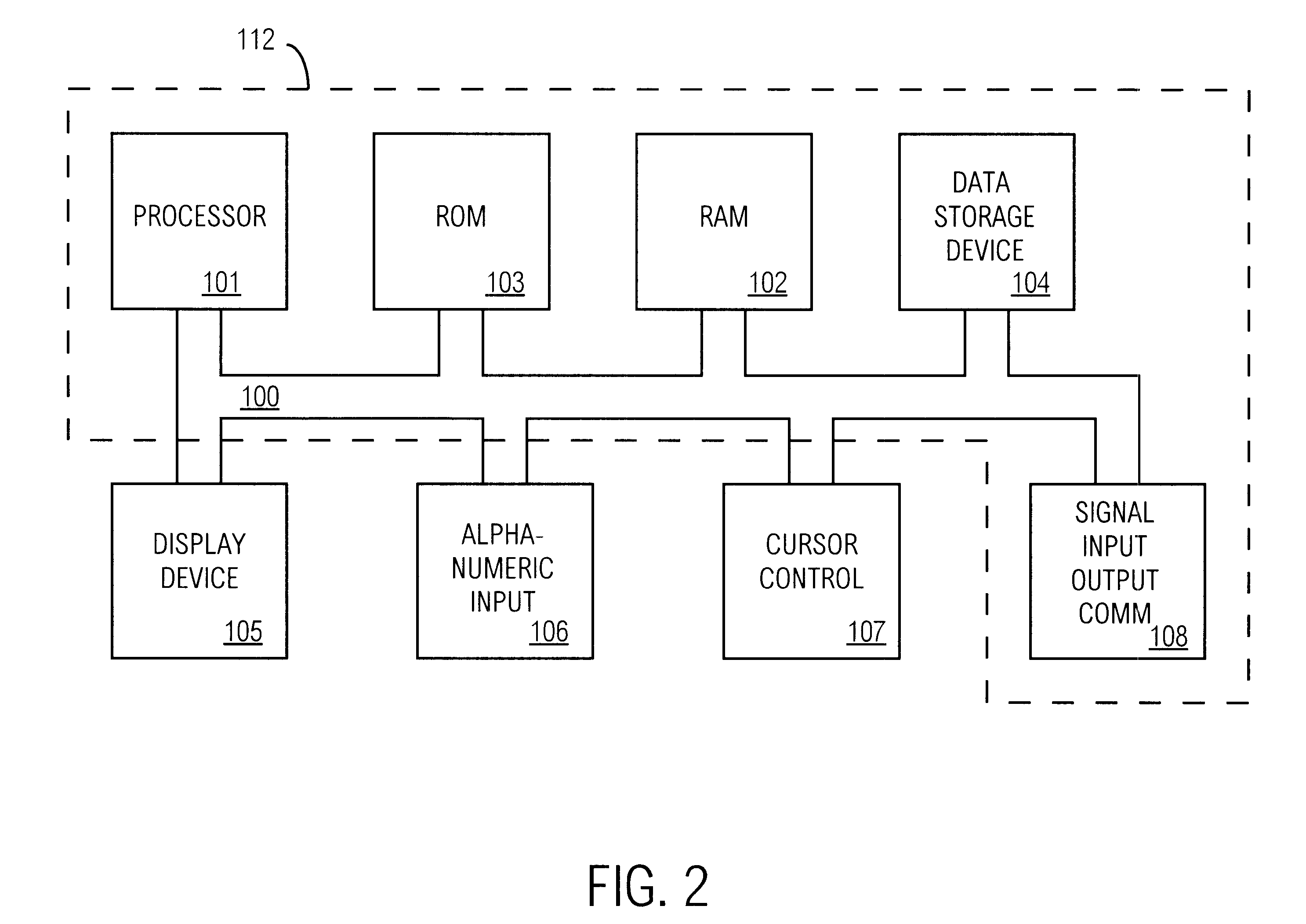Electronic design automation system and methods utilizing groups of multiple cells having loop-back connections for modeling port electrical characteristics
- Summary
- Abstract
- Description
- Claims
- Application Information
AI Technical Summary
Problems solved by technology
Method used
Image
Examples
Embodiment Construction
The loopback connections discussed above span between the ports of a single or individual scan cell and are called "self-loops." The following embodiment of the present invention, in addition to self-loops, also utilizes loopback connections that span from the scan-out port to the scan-in port of scans cells located within multi-bit cells and multi-bit components. Also used are long loopback connections that span over multiple individual scan cells (multi-cell groups). The loopback connections of multi-bit cells, multi-bit components and multi-cell groups act to simulate the electrical characteristics of the ports of scan cells as the ports would appear if coupled in a scan chain, thereby facilitating circuit optimizations, etc. As discussed above with respect to self-loops that span a single or individual sequential cell, multi-cell loopback connections provide the TR compiler 625 (FIG. 8) with enough information to determine the electrical impact of the DFT circuitry on its design...
PUM
 Login to View More
Login to View More Abstract
Description
Claims
Application Information
 Login to View More
Login to View More - R&D
- Intellectual Property
- Life Sciences
- Materials
- Tech Scout
- Unparalleled Data Quality
- Higher Quality Content
- 60% Fewer Hallucinations
Browse by: Latest US Patents, China's latest patents, Technical Efficacy Thesaurus, Application Domain, Technology Topic, Popular Technical Reports.
© 2025 PatSnap. All rights reserved.Legal|Privacy policy|Modern Slavery Act Transparency Statement|Sitemap|About US| Contact US: help@patsnap.com



